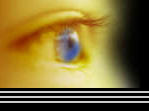The Statue Of Liberty – Symbol Of American Pride
By James Donahue
If there is any one symbol portraying national pride among the
citizens of the United States is has to be the Statue of Liberty.
That magnificent copper and iron monument has stood 305-feet
tall, holding a lamp of welcome to travelers entering New York at Liberty Island since it was erected between 1875 and 1886.
It was a gift from France, designed by architect Frederic Auguste Bartholdi.
Since that date, millions of immigrants arriving from Europe
and hoping for a new life in America have thrilled at the sight of “Lady Liberty” standing tall and looking out
over the vast Atlantic as their vessel approached Ellis Island.
The statue has appeared on thousands of printed documents depicting
everything we believe about our nation.
What few people know, however, is just how this great monument
came into existence and why it is located at this particular place.
It is said that Bartholdi was inspired by the fact that French-US
friendship was high, the United States was celebrating its 100th anniversary in 1876, and the nation had just emerged
from the end of the Civil War that brought about the abolition of slavery. All of these factors were said to have entered
into the decision to donate this statue to the United States.
Yet this was not always on Bartholdi’s mind. The architect
thought of the monument as something universal. His first attempt was to build it looking over the Suez Canal, where all great
ships of the world passed. But when Ismail Pasha of Egypt did not warm to the idea, the man who financed the project, French
historian Edouard Rene Lefebvre de Laboulave, president of the French anti-slavery society, commissioned the work as a gift
to the United States.
As it has been for every major thing done in this nation, there
was a lot of political, social and even religious wrangling over accepting this great gift, where to place it, and if we even
wanted it. The people of Philadelphia wanted the statue placed along the Delaware River. Some complained that the statue was
too big, too ugly. Boston writer James Russell Lowell complained that the structure was “overdone” and that he
could not see the point of it. The Roman Catholic Church challenged it as a “pagan female idol of liberty.”
Indeed, the very design of the statue was obviously inspired
by the Greek drawings of Demeter, the Goddess of Liberty whose raised hand held a Flame of Liberty.
Eventually, however, and perhaps to the credit of the poet Emma
Lazarus, who was active in helping indigent immigrants entering the country, a site was picked on Fort Wood, later named Liberty
Island. Her poem The New Colossus, which was auctioned in 1883 to raise money for
the pedestal, helped the nation perceive the monument as a trans-Atlantic message of liberty and hope.
The Lazarus poem is today inscribed on a bronze plaque at the
base of the Statue of Liberty.
The pedestal on which the lady stands is a work of art in itself.
Once the money was raised, this part of the structure was designed by American architect Richard Morris Hunt.
The statue took 11 years to manufacture and assemble. That is
because it was sent to America in pieces by ship. And in 1886, the concept of skyscrapers was not even thought of in New York
or anywhere else. Thus the statue was the tallest structure ever erected in North America. It required special engineering
planning to design and manufacture the cranes and other equipment needed to raise the pieces of the monument into place.

